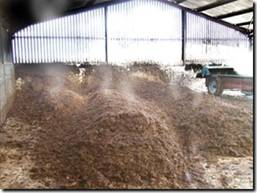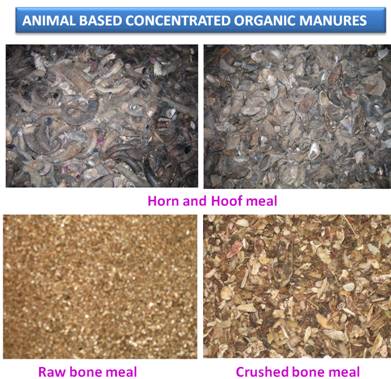Anitha Pailoor
Agriculture
B N Nandish, a farmer in Shikaripura taluk’s Churchigundi,
has developed his own farming practices based on five basic fundamentals
– soil, sunlight, aeration, water and food. Inspired by Masanobu
Fukuoka’s ‘One Straw Revolution,’ Nandish took to natural farming, and
hasn’t looked back ever since, writes Anitha Pailoor
 Rudramuni
is a relieved man. Over the past two years, he hasn’t had to wait in a
long queue to buy fertiliser. He allows the farm to shape up on its own,
a lesson learnt from his fellow farmer Nandish of Churchigundi village
in Shikaripura taluk. They have lowered pesticide input by 70 per cent
over the last couple of years, according to records maintained by
Nandish. Nandish’s agriculture is anchored on five basic principles -
maintain live soil, allow appropriate sunlight and good aeration, then
focus on water and food.
Rudramuni
is a relieved man. Over the past two years, he hasn’t had to wait in a
long queue to buy fertiliser. He allows the farm to shape up on its own,
a lesson learnt from his fellow farmer Nandish of Churchigundi village
in Shikaripura taluk. They have lowered pesticide input by 70 per cent
over the last couple of years, according to records maintained by
Nandish. Nandish’s agriculture is anchored on five basic principles -
maintain live soil, allow appropriate sunlight and good aeration, then
focus on water and food. He feels that most farmers’ problems are rooted in the fact that they concentrate on water and fertiliser, that too feeding an excess of it, and overlook the other three components. As farmers in the village discover the logic behind Nandish’s farming, they have been shifting to a farming practice that requires low external input and is sustainable.
Nandish discontinued his studies after his Pre-University and took charge of his 15-acre paddy field in 1998. In the beginning, he had a one-point agenda, to enhance the productivity of the farm. He continued chemical farming practised by his parents focusing on ‘clean cultivation.’ Irrational use of pesticides and fertilisers enhanced the yield occasionally, but there was a rise in the cost of cultivation, pests and diseases. Consequent crop failures made him rethink about the sustainability of the practice.
It was a newspaper review on natural farmer Masanobu Fukuoka’s ‘One Straw Revolution’ that changed his life. A voracious reader, he soon studied Fukuoka’s three books and other books on organic farming. Fukuoka’s thoughts and experiments in farming influenced him to experiment along the same lines. Ever since, observing and experimenting have become two important tools in his farming.
During the transformation from chemical to organic farming, he introduced various legume varieties in the farm. Nandish adopted Fukuoka’s experiments that are suitable for local agro-climatic conditions. His experiments with legumes and paddy varieties have taken him to hundreds of seed conservers, particularly farmers. He also makes it a point to participate in workshops and seminars on sustainable farming practices. He visited research stations in his quest for carrying out nature-friendly farming.
Green manuring enriches soil
Over the last one decade, Nandish is known among farmers as a legume farmer. His farm has a range of legumes that maintain the fertility of the soil. He knows that a field requires local plant diversity like wild weeds, shrubs, trees and herbs along with legumes.
He feels that diversity and biomass of the weeds indicate soil fertility. Cover crops help build a balanced ecosystem and develop the right kind of micro-climate for the plants. Cover crops, especially the leguminous ones, restrict the growth of weeds. There are over 100 green manure species in his paddy and areca farm, including some perennials.
About 20 species are used in the paddy field for green manuring during pre-cultivation and post-cultivation periods. The crops include sunhemp (drought resistant), daincha (withstands water logging), horsegram (good biomass, fodder), velvet beans (high nitrogen fixing, good biomass), niger, cocks comb and fodder cowpea.
Every new technology or method that has been introduced has something to offer. After the System of Rice Intensification (SRI) method was introduced, Nandish reduced water logging in his paddy field to one month. Every cropping pattern has pests and diseases and multiplies under favourable conditions. Nandish says that even his crops are prone to pest problems and diseases, but the situation has never gone out of control. In a bio-diversity rich farm, a balance is maintained in the eco-system. The harvest also turns out to be above average. His farming system has reduced the labour dependency by 70 per cent. He prefers fine rice varieties suitable for the region. Though he keeps changing the varieties, he has been growing black basmati over the last eight years in one patch.
Rice is sold in the organic market.
Apart from paddy, he has five acres of horticulture plantation. Arecanut, banana, green gram, black gram, turmeric, ginger, coconut and cocoa are other crops. Eighty -dd species in this farm provide food, fodder, timber, fuel-wood, natural dyes and check wind, act as live fence, pest repellents, trap plants etc as they enrich the soil. At the same time, he warns that vigorous growing of perennial creepers like pueraria, mucuna and mimosa invisa have to be avoided in the farm. Green manure has lowered his reliance on external inputs for his farm. Water is the only input, for which he is dependent on outside source.
Though he has a bore well that yielded water at 30 feet depth, he doesn’t want to overuse it. He waits for water to be released from a local dam for paddy cultivation.
Understand your farm
Before executing a farming practice or introducing a new crop, Nandish carefully studies it from different angles. He feels that legumes helped him maintain the yield when he shifted from chemical to organic. An authority in legume culture, he has collected seeds from different sources.
Tuber crops are also an important component in his areca farm. Constant observation has revealed that each and every plant in nature has something to contribute, and that we should explore it. He suggests that November to February is the right time to collect wild seeds.
In the recent past, he has also learnt that seeds brought by pests, birds, animals have very good germination and grow with vigour than those that are sown manually. He recalls an instance of parrots thinning the seed bed in his paddy nurseries.
Twenty five kilograms of paddy seeds per acre is the norm in the region. Every time hundreds of parrots would attack the paddy sprouts and about 75 per cent of the seedlings would be destroyed. One year, Nandish decided to plant the same amount of seedlings that the parrots had left unattacked. He had made another bed with 75 kg of paddy seedlings ready as an alternative. To everyone’s surprise, the seedlings were in surplus and the yield was good. Nandish analyses this saying that, “the parrots showed us the right amount of seeds needed. We feel that dense planting gives good yield. But it is not true. Now I have reduced the seeds to five kilos per acre.”
Original Post Here


























